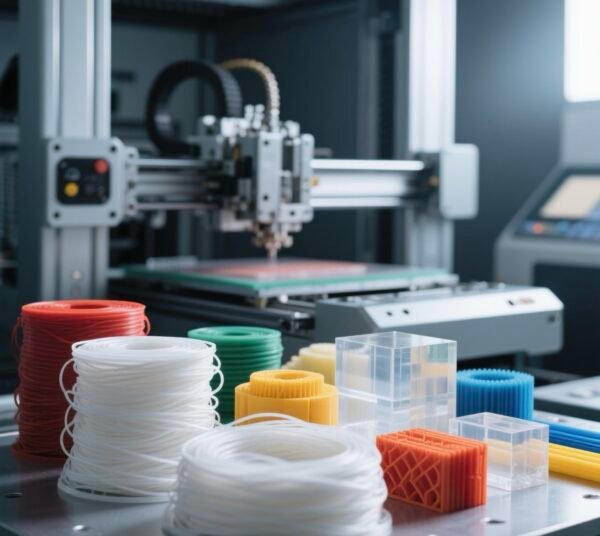A Fresh Perspective on 3D Printing
For years, 3D printing has been celebrated for revolutionizing manufacturing – making the impossible possible, from intricate aerospace components to personalized dental implants. Yet as this technology expands from prototyping into everyday products and medical tools, a critical question arises:
Are the materials used in 3D printing keeping up with the health and hygiene demands of their applications?
The Invisible Threat in Additive Manufacturing
Most consumers and even some manufacturers rarely consider that 3D-printed objects, especially those made using FDM (Fused Deposition Modeling), possess layered surfaces with microscopic ridges. These ridges:
- Trap moisture and debris
- Provide ideal conditions for bacterial growth
- Resist thorough cleaning due to their fine structure
Imagine a 3D-printed surgical guide used in a dental procedure or a custom-printed phone holder constantly exposed to skin oils and humidity. Without built-in antimicrobial properties, such products become hidden breeding grounds for microbes, undermining their safety and usability.
Introducing Antimicrobial Agents: Metals that Protect
In this context, inorganic antimicrobial agents – primarily silver, copper, and zinc compounds
Silver (Ag): The Silent Defender
Silver ions disrupt bacterial cell walls and interfere with their replication. Its high efficacy at low concentrations makes it a preferred choice for medical-grade filaments, offering long-lasting protection without altering material appearance or strength.
Copper (Cu): The Oxidative Shield
Copper ions damage microbial proteins and DNA, while also providing antifungal and antiviral benefits. This makes copper-based antimicrobial agents ideal for products exposed to varied environmental conditions, such as outdoor equipment or kitchen utensils.
Zinc (Zn): The Gentle Protector
Zinc’s antimicrobial action is milder but broad-spectrum, targeting bacterial enzyme systems while offering anti-inflammatory effects. It is often combined with silver or copper to create synergistic antimicrobial blends for enhanced performance.
Why Integrate Antimicrobials Into 3D Printing Materials?
Here are three key reasons:
- Hygiene Assurance
End-use 3D-printed products like surgical tools, dental guides, or cutlery demand hygiene by default. Integrating antimicrobial agents ensures bacteria are eliminated on contact, maintaining product safety throughout their lifecycle. - Durable Protection
Unlike surface coatings that wear off, embedding antimicrobial agents within filaments ensures continuous protection, even if the surface is scratched or worn. - Design Freedom Without Compromise
Manufacturers can produce complex designs without worrying about bacterial ho
Transforming Industries: A Broader Impact
Healthcare and Dentistry
3D-printed surgical guides, prosthetics, and orthodontic devices require materials that not only meet mechanical performance standards but also maintain sterility. Silver-based antimicrobial filaments are becoming the material of choice for such applications.
Consumer Goods
From custom kitchen tools to smartphone holders, consumers are becoming more aware of hygiene. Antimicrobial-infused PLA or PETG filaments address this need naturally, offering an invisible layer of protection against bacteria and odors.
Education and Prototyping Labs
Shared printers and printed models in schools, universities, and maker spaces often exchange multiple hands. Incorporating antimicrobial agents adds a layer of communal safety without altering printing parameters or increasing processing complexity.
Challenges and Innovations Ahead
While the benefits are clear, integrating antimicrobial agents into 3D printing materials also presents challenges:
- Maintaining Filament Printability
High-temperature stability and homogeneous dispersion are required to ensure smooth extrusion and strong layer adhesion. - Cost Considerations
Premium antimicrobial additives increase material costs, though economies of scale and optimized formulations are rapidly reducing this gap. - Regulatory Compliance
Especially in medical and food-contact applications, formulations must comply with local and internatio
Manufacturers are addressing these challenges through nano-formulations, which maximize antimicrobial surface area while minimizing total additive quantities, and by developing masterbatches tailored for popular 3D printing polymers such as PLA, ABS, and PETG.
Looking to the Future
As 3D printing continues its rapid expansion, antimicrobial agents will play an increasingly critical role in:
- Healthcare safety innovations
- Consumer product hygiene
- Smart manufacturing materials
This integration represents a natural evolution of additive manufacturing, where form and function meet health and safety seamlessly.
Final Thoughts
3D printing empowers designers, engineers, and innovators to create freely. Incorporating antimicrobial agents within 3D printing materials ensures these creations do not just inspire, but also protect.
✉️ Contact Us
We specialize in providing silver, copper, and zinc-based antimicrobial solutions compatible with major 3D printing polymers, enabling you to pioneer safer, cleaner products for your customers. Get in touch to explore tailored formulations for your next innovation.


-300x210.jpg)
